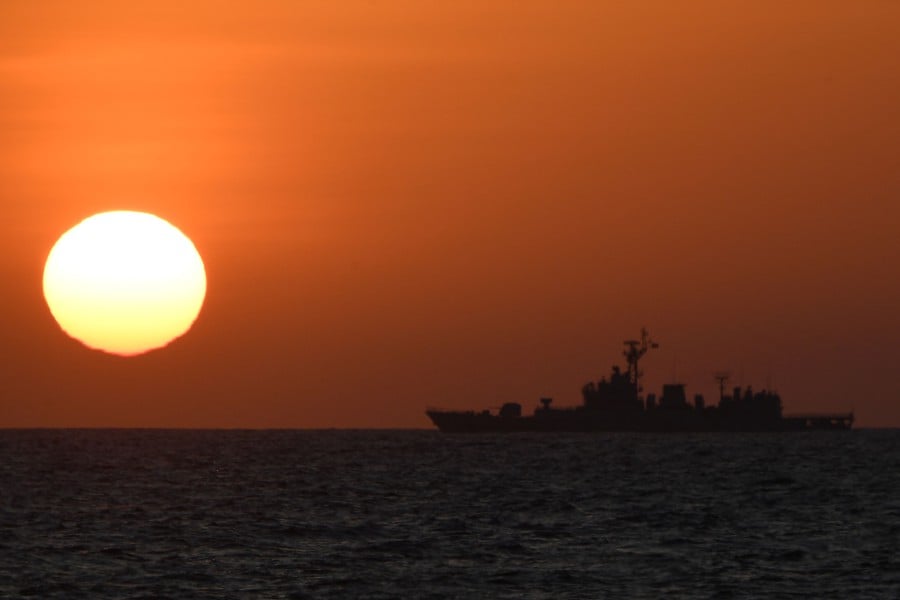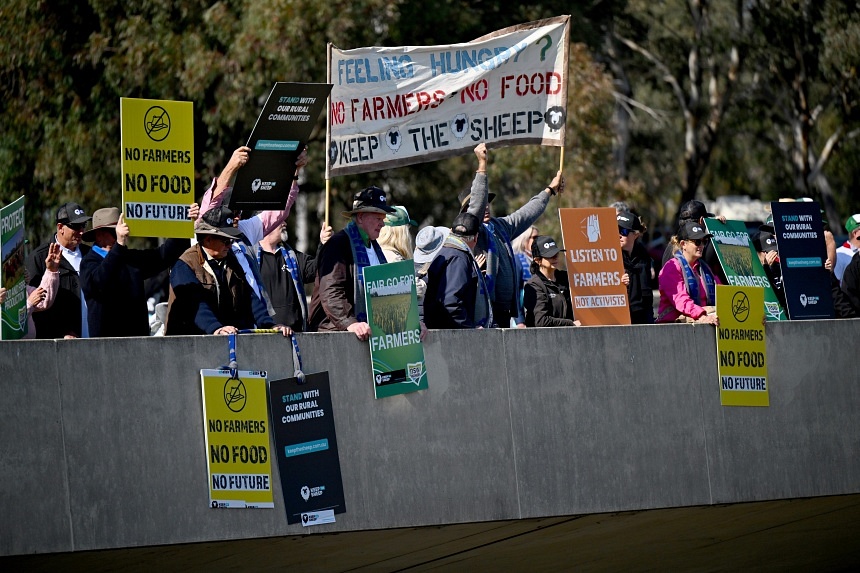Published Sep 10, 2024
China News Reporter
NEWSWEEK
Chinese President Xi Jinping pledged $51 billion in financing to Africa, during the summit he hosted for the continent's leaders in Beijing last week. The move comes as the U.S. scrambles to regain influence in the region.
China hosted the ninth Forum on China-Africa Cooperation (FOCAC) summit last week, an event held every three years since 2000. Most of Africa's 53 countries sent delegations to the summit, except for Eswatini—formerly known as Swaziland—which remains the only African nation maintaining diplomatic ties with Taiwan rather than China.
A few years ago, China-financed megaprojects like bridges, roads, and ports were commonplace in the developing world, including many in Africa. These investments were a key part of President Xi Jinping's signature global development strategy, the Belt and Road Initiative.
 China has promised African leaders over $50 billion in financing over the next three years. The pledge comes as China continues to outspend the U.S. in the continent, though the Biden administration is trying to... More Photo Illustration by Newsweek/Getty Images
China has promised African leaders over $50 billion in financing over the next three years. The pledge comes as China continues to outspend the U.S. in the continent, though the Biden administration is trying to... More Photo Illustration by Newsweek/Getty ImagesHowever, many countries could not repay these loans, leading to allegations in Washington that China was engaging in predatory "debt traps." This criticism became more prevalent as several African nations began experiencing financial strain.
Efforts to restructure or renegotiate Chinese loans became widespread, especially after the COVID-19 pandemic hit, which worsened economic conditions in many countries. Several African nations, including Zambia, Chad, and Ethiopia, were forced to seek debt relief. Zambia, in particular, defaulted on its loans in 2020 and underwent a protracted restructuring process.
By June 2023, Zambia had managed to secure extensions on maturities through its participation in the G20 Common Framework, but not reductions in the principal of the debts, including those to China.
China has shifted its approach to international investments, particularly through the BRI, in the wake of these debt crises and as the world's second largest-economy cools.
Once characterized by large-scale loans for massive infrastructure projects, the initiative now favors smaller, more focused projects, which Chinese officials have touted as "small but beautiful."
When asked how China reconciles this shift toward smaller projects with the new large-scale support it has pledged to Africa, Chinese Foreign Ministry spokesperson Mao Ning told reporters she saw no contradiction.
China's foreign direct investment flow to Africa first overtook the U.S.'s in 2008, totaling just under $6 billion, according to data from the U.S. Bureau of Economic Analysis and China's Ministry of Commerce. From 2013 onwards, Chinese FDI consistently exceeded that of the U.S., and between 2015 and 2022, China's investment flows were more than double those of the U.S.
Since 2021, the Biden administration has made efforts to boost U.S. investment in Africa, Alex Vines, director of the Africa Program at the London-based think tank Chatham House, pointed out.
Previously, U.S. development aid had focused on sectors like health, agriculture, and governance. Recently, however, the U.S. has placed more emphasis on infrastructure projects, such as upgrades to the Lobito Corridor railway linking Angola's Lobito Port with the city of Luau.
"There has been a re-curation of assets and increased footfall of U.S. officials in Africa, alongside initiatives like the Lobito Corridor," Vines said.
Vines said the U.S.'s "Achilles heel" when it comes to engagement with Africa it's the American private sector, which "outside of hydrocarbon investments and access to strategic and critical minerals remains tepid." "This gives China and other U.S. competitors an advantage.
By contrast, many of the new partnerships heralded by China last week were focused on business ties, such as trade, green development, and cooperation on industrial chains and development.
Vines predicted U.S. engagement with Africa would drop further if Republican Party nominee Donald Trump is elected to a second term, citing the former president's "American First" prioritization of reducing trade deficits over foreign investment and aid.
Data from the U.S. Census Bureau shows that in 2023, the U.S. exported just under $29 billion in goods to Africa but imported over $38 billion, creating a $10 billion trade deficit.
"This is not what many African states want," Vines said. "They increasingly seek multipolarity, including economic engagement with both China and the U.S."
A Pew Research Center poll released last year surveyed respondents in two African countries, Kenya and Nigeria, about their views of investments from the superpowers.
Among Nigerians, 82 percent said Chinese investment benefited their country, while 74 percent viewed U.S. investment favorably. Meanwhile, 73 percent of Kenyans believed both countries' investments had been beneficial.
Newsweek reached out to the Chinese Foreign Ministry and U.S. State Department with written requests for comment.
.jpg)


 Image:An officer put a bar hold around Hill’s upper chest or neck. Pic: Miami-Dade Police Department/Reuters
Image:An officer put a bar hold around Hill’s upper chest or neck. Pic: Miami-Dade Police Department/Reuters












Indices to measure soft, hard and smart power are back in vogue to the extent that the Economist magazine devoted two recent editions to its forecasts of China’s power potential (finding that it will shortly peak) and that of the United States (which it argued would remain globally dominant).
At the Institute for Security Studies’ African Futures and Innovation programme, we come to somewhat different conclusions using the integrated International Futures forecasting platform (IFs). Using IFs, we recently published a set of global forecasts on how events in the rest of the world could unfold and the impact on Africa two decades into the future. We discussed these alternative scenarios at SIPRI’s 2023 Stockholm Forum on Peace and Development.
Again, Africa has become an area of competition, this time primarily between China and the West, with important implications for the continent’s development potential given the dire impact of superpower competition previously. Russian destabilization also affects Africans through the activities of the Wagner Group and election interference, among others. A long-term view is, however, that its war on Ukraine will inevitably diminish Russia’s status globally, including its role in Africa.
Instead of the dramatic reductions in Chinese growth in the years ahead and a future of parity in economic size between China and the USA, we foresee the Chinese economy overtaking the USA’s in size within about a decade. By the early 2040s, China will surpass the USA in hard power potential. At that point, China will be the single most powerful country in the world. This delay between becoming the largest kid on the block and the strongest kid is down to the considerable time it will take China to match the stock of historical investments the USA has made in its military and to displace the dollar as the global reserve currency.
Our view is that the Economist's obsession with the single-country top-dog status of the USA is therefore misplaced. In our two extreme scenarios, ‘a Growth World’ and ‘a World at War’, gross domestic product (GDP) per capita in China is only 40 or 30 per cent of that in the USA by mid-century. While American dominance is in structural decline, the West will likely continue to dominate globally in wealth, technology and global power stakes since it consists of a number of like-minded, high-income countries, including some in Asia. At the same time, many countries in China’s neighbourhood are at odds with the emerging giant and fearful of its growing influence. China will never achieve anything close to the role played by the USA in recent decades.
Doubling down on authoritarianism under Chinese President Xi Jinping will likely also prove self-defeating. There is no replacement in sight for a system where all people have a vote on who governs them. Populism, like terrorism, Covid-19 and other recent concerns, will run its destructive course in the West and be replaced by another sense of crisis in today’s hyper-connected and rapidly changing world. It is unlikely to end the democratic project.
Implications for Africa
In our assessment, the next two decades will bring a more complex, multipolar and less Western world, one in which regional rather than global connectedness is growing. What does this mean for Africa?
Clearly, the pressure for Africans to choose sides in the increasingly acrimonious struggle between China, Russia and the USA does not serve African interests. Africa is now almost equally connected with the European Union, the USA and countries from the Global South (China and India, among others), and the economic momentum is with the latter group. The value of exports from sub-Saharan Africa to China has increased tenfold over the last two decades. China has emerged as an essential source of financing for African countries.
Meanwhile, aid—mainly from EU members and the USA—has fallen from peaks of about 6 per cent of Africa’s GDP in the 1990s to an average of only 2.5 per cent in the past decade as Africa’s economies have increased in size. Aid remains essential for poor countries, but it can no longer purchase loyalty (and votes in the United Nations General Assembly), as it could before the collapse of the Berlin Wall.
More important than aid is foreign direct investment (FDI). Although flows have declined, the stock of FDI from the West in Africa is much larger, and the potential for significant future inflows is greater. China only accounted for 6 per cent of FDI stock in Africa as of the end of 2020, although flows have accelerated in recent years.
Africa accounts for around 3 per cent of global GDP (at market exchange rates). In our most aggressive growth forecast, Africa could almost triple that portion by mid-century. At that point, its population will have increased from 17 per cent of the global total to around 25 per cent, adding to its attraction as the last remaining and growing untapped consumer market. But even in an aggressive growth scenario, most of the world’s extremely poor people will still live in sub-Saharan Africa, and the region will continue to lag on most development indicators. Yet, with the African Union, its 55 states, and an integrated free-trade area, Africa would have a much larger global voice and be an attractive investment destination.
If Africa wants to grow, reduce poverty and provide jobs for its large working-age population, it must trade and engage with China, Europe and the USA and increase its relations with the emerging South but do so on its own terms, much as China has done. It must set clear investment standards, institute full transparency for all government contracts, and insist on taxes being paid where multinationals operate, as well as knowledge transfers and local ownership requirements.
But above all, inclusive economic growth in Africa requires global stability, particularly an end to the competition between China and the USA for influence on the continent, including efforts to align foreign policy orientation on matters such as Taiwan or Ukraine.
Instead, development in Africa requires the international community to knuckle down and make the hard choices necessary to create a future that accommodates all of humanity, particularly reform of the global financial architecture as outlined in a recent and bold UN policy brief.
In all of the above, Europe steadily emerges as the swing region globally, moderating and bridging these global divisions. Its future is inevitably closely tied to that of Africa through history, migration, the resources to power the Fourth Industrial Revolution, trade, and the normative impact of policies on data privacy and climate justice.
SIPRI is pleased to share a series of guest blog posts from partners of the 2023 Stockholm Forum on Peace and Development.
ABOUT THE AUTHOR(S)